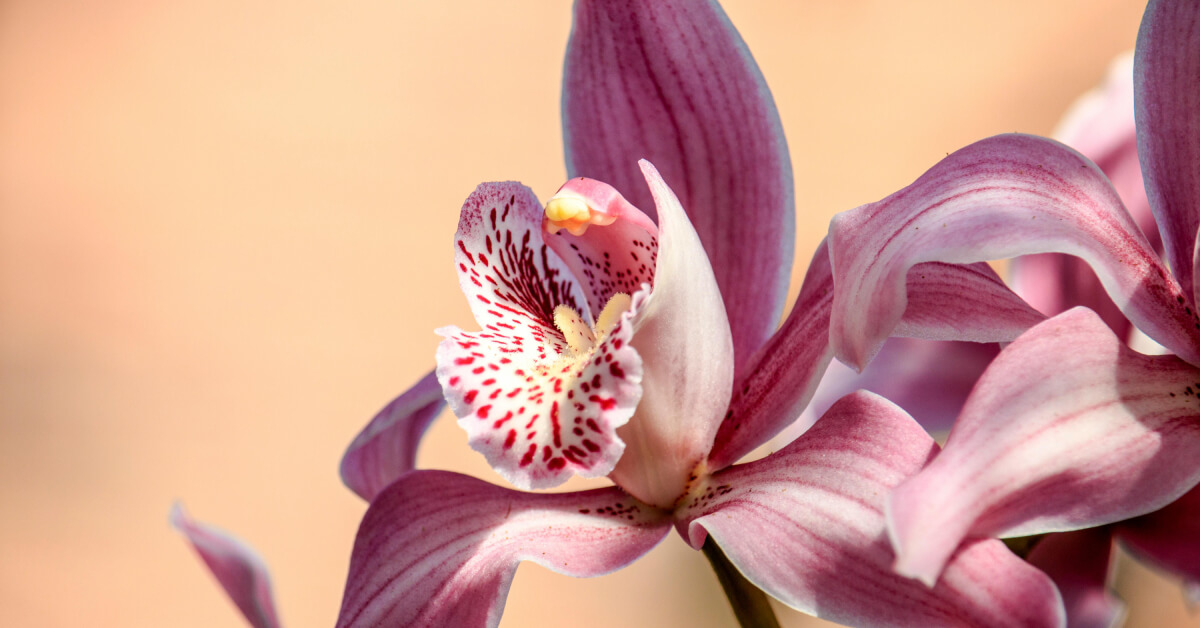Orchids aren’t just houseplants—they’re quiet companions that move through distinct cycles of beauty and rest. To care for them is to accept a slower rhythm, one that asks us to pay attention, to adapt, and to let go of perfection.
An orchid in bloom can feel like a small miracle. But what happens when the flowers fall away? In this post, we’ll explore how to care for orchids—before, during, and especially after blooming—so they can continue to thrive and return to bloom again.
Let Go of the Myth of Fragility
Orchids have an undeserved reputation for being “difficult.” In truth, they’re simply particular. They don’t thrive under neglect—but they also don’t ask for perfection. What they need is consistency, observation, and a respect for their natural rhythm.
Common orchids like Phalaenopsis (moth orchids) are especially well-suited to indoor life when we learn their language.
Light, Not Heat
Orchids prefer bright, indirect light. Morning light from an east-facing window or filtered light through sheer curtains is ideal. Harsh sun will scorch their leaves, while too little light means no blooms.
To check for balance:
- Leaves should be a light grassy green—not dark green (too little light) or yellowish (too much).
- A north-facing window can work, but may require supplemental light.
Water with Intention
Orchids do not like to sit in water—but they don’t like to dry out completely either. The key is a gentle rhythm.
- Water once a week in most homes (less in winter, more in heat).
- Use room-temperature water and allow it to fully drain.
- Avoid letting water sit in the crown of the plant—it invites rot.
Instead of watering on a strict schedule, use your fingers. If the roots look silvery or feel dry, it’s time.
Respect the Roots
Orchid roots are exposed for a reason—they absorb light and breathe. Avoid burying them in heavy soil. Use a breathable orchid mix: bark, sphagnum moss, or a blend designed for epiphytes.
Healthy roots:
- Are firm, silvery-green when dry, bright green when wet.
- Should not be mushy or brown. If they are, it’s time to repot.
Repotting every 1–2 years keeps the plant healthy and prevents decay.
After the Bloom: The Quiet Phase of Orchids
The moment the last bloom fades is not the end—it’s a beginning. This resting phase is just as important as the flowering one.
Here’s what to do:
- Trim the spike: If it’s green and healthy, you can cut just above a node (a small bump on the stem) to encourage a possible second bloom. If it’s dry or brown, trim it near the base.
- Shift focus to care: Continue with proper light, water, and humidity. This is a time for rebuilding strength.
- Wait: Your orchid will tell you when it’s ready. New roots or leaves are signs it’s preparing to bloom again.
Encourage Re-blooming, Gently
Orchids may rest for several months before blooming again. To help encourage a new cycle:
- Keep night temperatures slightly cooler than daytime (a 10°F drop is ideal).
- Avoid over-fertilizing. Use a weak, balanced orchid fertilizer once or twice a month during active growth.
Patience is not passive—it’s part of the process.
A Living Dialogue
Caring for orchids is less about “getting it right” and more about entering a quiet conversation. You’ll begin to notice the signals—when leaves shift, roots stretch, and buds form.
Let your care adapt with the seasons.
- Lower watering in winter.
- Increase humidity in dry months with a pebble tray or gentle misting.
- Let the plant guide you. Not the calendar.
An orchid isn’t less beautiful when not in bloom. The strength of its leaves, the quiet reach of its roots, the promise of a new bud—these are all part of its story.
To care for orchids is to embrace impermanence. It’s to create space for pause, rest, and return.

